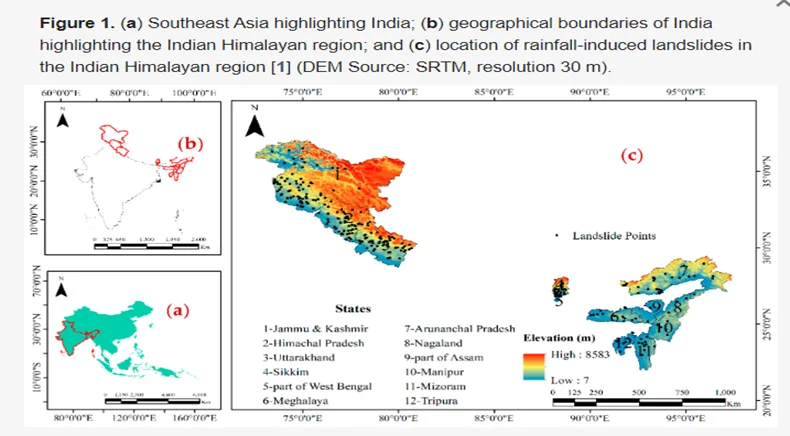Answer:
| Approach:
Introduction
- Start your answer with a brief about the Himalayas.
Body
- Significant of Causes of Landslides and its measures of mitigation in the Himalayas.
Conclusion
- Conclude your answer with the importance of Himalayas.
|
Introduction:
The Himalayas is the highest mountain range in the world, and has 9 out of 10 of the world’s highest peaks. One of the most geologically active mountain ranges in the world, it is highly prone to landslides. Landslides occur due to various reasons and can cause significant damage to life, property, and infrastructure.
Body:

Causes of Landslides in the Himalayas:
- Geological Composition: The Himalayas are geologically unstable due to tectonic plate movements, resulting in frequent earthquakes and landslides. E.g In 2015, a massive earthquake of magnitude 7.8 struck Nepal, causing widespread damage and loss of life. The earthquake was caused by the movement of tectonic plates beneath the Himalayan region.
- Topography: The steep terrain and high elevation of the Himalayas make them susceptible to landslides.E.g In 2017, a massive landslide occurred in the Indian state of Himachal Pradesh, burying two buses and killing more than 50 people. The steep terrain of the region contributed to the severity of the landslide.
- Deforestation: The clearing of forests for agriculture and construction destabilizes the soil and increases the risk of landslides. E.g In 2013, a landslide in Uttarakhand, India killed over 5,000 people and destroyed homes, bridges, and roads.
- Climate Change: The melting of glaciers and changes in rainfall patterns due to climate change contribute to landslides in the region. E.g In 2018, a massive landslide in Sikkim, India killed at least six people and destroyed several homes.
- Excessive rainfall in monsoon also leads to landslides in the himalayas.
Measures of Mitigation:
- Early warning systems: Developing and implementing early warning systems using remote sensing, satellite imagery, and real-time monitoring of rainfall and soil moisture levels can provide advance warning of potential landslides, allowing for timely evacuation and rescue operations. like the IMD department.
- Landslide zoning: Identifying and mapping high-risk landslide zones and prohibiting human activities in those areas can help prevent landslides.
- Afforestation: Planting trees and vegetation on the slopes can help stabilize the soil, prevent soil erosion, and reduce the risk of landslides.
- Slope stabilization: Stabilizing slopes using techniques such as terracing, retaining walls, and drainage systems can prevent the loss of soil and rock material due to landslides.
- Building codes: Developing and enforcing building codes that consider the local geological and hydrological conditions can ensure that new infrastructure is designed to withstand landslides and minimize damage.
Conclusion:
Landslides are a significant natural hazard in the Himalayan region, posing a severe threat to human lives and infrastructure. A collaborative effort between the government, communities, and scientists is necessary to develop sustainable solutions to reduce the risk of landslides in the region.
